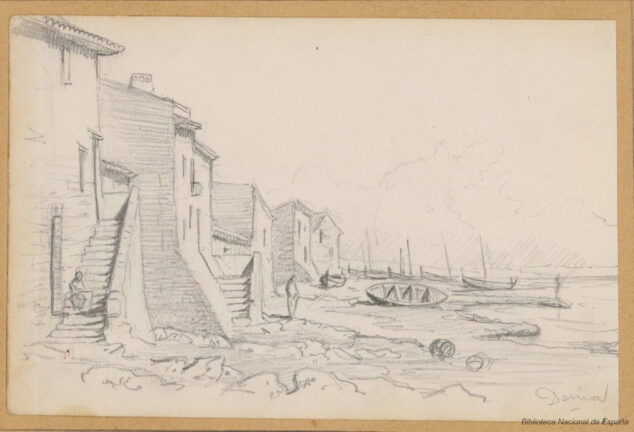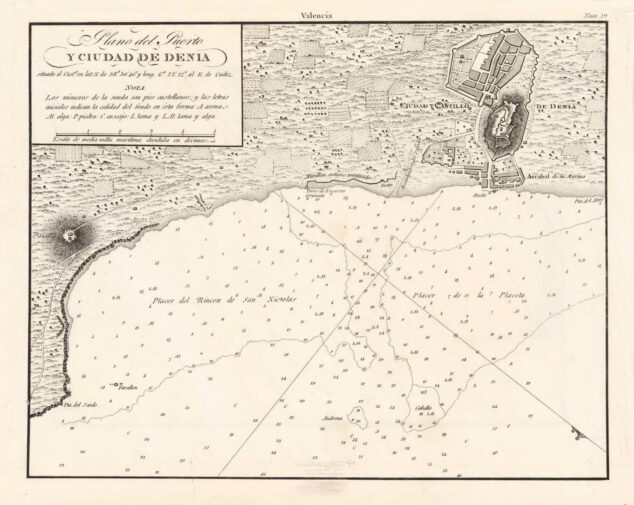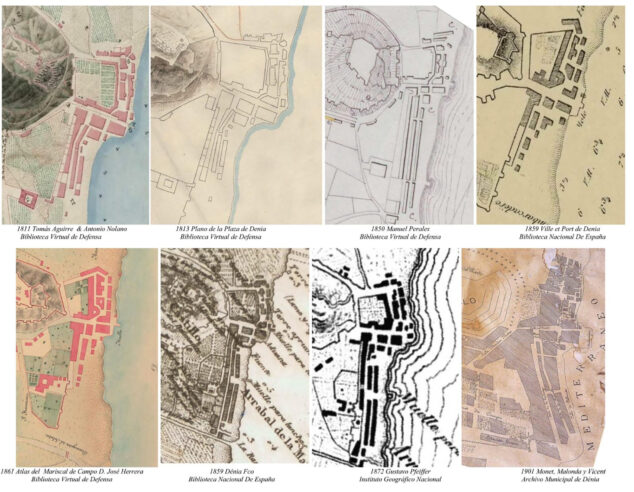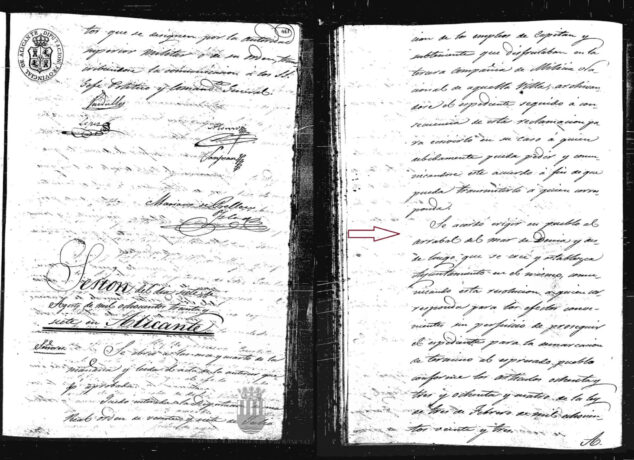Discrepancies between the different districts of a city are inevitable. Also in Dénia you can see these great differences between neighborhoods that share a street. But all these frictions become anecdotal in comparison to the historic misunderstanding that existed during the first half of the 19th century between the maritime neighborhood and the rest of the city, which caused the independence of the former and the creation of a new municipality doomed to failure: Diana's Town.
"Those of us from Dénia have always said: Dalt Dénia and Baix la Mar. They are the two realities," advances the historian Javier Calvo, who has dedicated much of his work to studying this period of local history and now helps us understand this striking event. The Dalt Dénia, he tells us, is what we now know as the historic center, that is, Carrer Loreto and surrounding areas, Les Roques, Plaça de la Constitució and Valgamediós, where the land gate was. He marine district It was an early version of what we now know as Baix la Mar, today completely integrated into the rest of the city as just another neighborhood. Now, it wasn't like that then.
During the first decades of the 19th century, the street map was not shared, Marqués de Campo was not yet connected to the port, and you had to leave Dalt Dénia to travel to Baix la Mar.
Port splendor
Dénia at that time was a prosperous city, from a demographic and economic point of view. After finishing the Spanish War of Independence, the municipality enjoyed great population growth. It is estimated that in 1837 it had nearly 3000 inhabitants.. This is due in part to port activity, as exports of raisins and other agricultural resources were constantly being made to the rest of the world. Our port was one of the most important in the area, the only natural one between Peníscola and Alacant, and it was in full boiling water.
A society parallel to that of the city was created around the sea. The port was surrounded by warehouses, as might be expected, but it also housed the homes of almost a third of the population. They were the port workers and their families, the "mareantes" as Calvo remembers who were called in a practically derogatory way. But they were also mostly the original residents of Dénia, since the upper part had received numerous families, many investors, who arrived from outside.
The conditions and services of the port neighborhood, however, left much to be desired. The marshes that surrounded the area were large sources of infection, people got sick, and they didn't even have a doctor to treat them. The last one who worked there before '37, in fact, died completely poor. It was a neighborhood extremely humble, in whose records Calvo has found many heads of families occupied by 13-year-old children when the father has died or having embarked to work as a sailor.
And why not live in Dalt Dénia, which had better services, even though the majority of families were originally from the town? By the wall that surrounded them, protector of the city but also a great barrier that culminated the division between neighbors.
Choosing violence (or uncertainty)
Dalt Dénia was still fortified, with the great wall that embraced the city and protected it from the violent outside. The one that remains visible in Ronda Muralles, and gives it its name, extended through Plaza Valgamediós, practically surrounding the city along Alicante Avenue and La Via, and closing at Diana Street.
It was a turbulent time, in which going from one municipality to another without a weapon was taking a risk. Too many frictions were resolved with blood, too many homes had looting as their main economic engine. The war, to make matters worse, was a continuous one that even arrived from abroad by sea, but the land was not spared either when In 1833 the first Carlist war began. With so much hustle and bustle, it was better to sleep within a protective wall.
The wall, however, had its drawbacks. The entrance gates were closed when night approached to prevent anything outside from entering. And those who worked in the port, whose work and travel schedules extended beyond those of those doors, were They found them closed daily. They had no choice but to build their house outside the wall, and thus the fishing neighborhood grew, on the shores of the Mediterranean and close to where the families had to work every day.
They were houses completely exposed to the uncertainty and lack of protection from the outside, but the positive thing is that they also avoided paying taxes for the security of living within the walls. In fact, this also encouraged the poorest families to stay in what would become Baix la Mar.
The two realities and their growing distance
As expected, the constant growth of these two distant nuclei created two societies with too many differences, and that space that separated them, which did not reach half a kilometer, became increasingly larger.
The economy of the maritime area was based on the sea, while the city lived on agriculture. Although there were families of all kinds on both sides, the wealthy lived inside the wall, while poverty reigned outside. The services also remained within the walls, the sick people lacked a doctor, but also teachers (they only had one of first letters in that seed of Baix la Mar) and even a cure of souls. Even faith was professed differently, since the devotion of the maritime neighborhood was towards saints related to the professions of the sea, and they dedicated their festivals to them (some of them preserved to this day).
All these cultural differences that had been internalized, the grievances of living exposed to diseases and violence from outside, the lack of minimum services in their streets, as well as a certain contempt that emanated from the intramural population towards whom they called dizzying, caused a gap difficult to seal. And, as we said, it was a good time for the port, with a booming commercial potential from which it could sustain itself. Soon the sailors joined forces, why not become independent to achieve services for themselves and improve their conditions?
The origin of Diana
They were already two sentimentally separated municipalities. Dalt Dénia, with about 2000 inhabitants, and the current Baix la Mar, with 900. Their future was sentenced, so each nucleus followed its own course when on August 7, 1837, the historian Javier Calvo announced to us, the Provincial Council of Alicante agrees, after the request of 40 residents of the maritime Dénia, to grant town status to the port neighborhood, being the birth of El Lugar de Diana or El Pueblo de Diana.
This was not the end. As we know today, Diana would end up being reabsorbed, but during those years the Dénia that we know was divided into two municipalities in order to put an end to their differences and prevent friction from escalating. It did not help much and the clash between the two towns increased, culminating in the disappearance of one of them.











History brings us closer to lived reality, we follow the article with enthusiasm
The stories that Javier Calvo tells us are always so interesting. Thank you very much for making us understand and get to know the city we live in
Magnificent article. Congratulations.